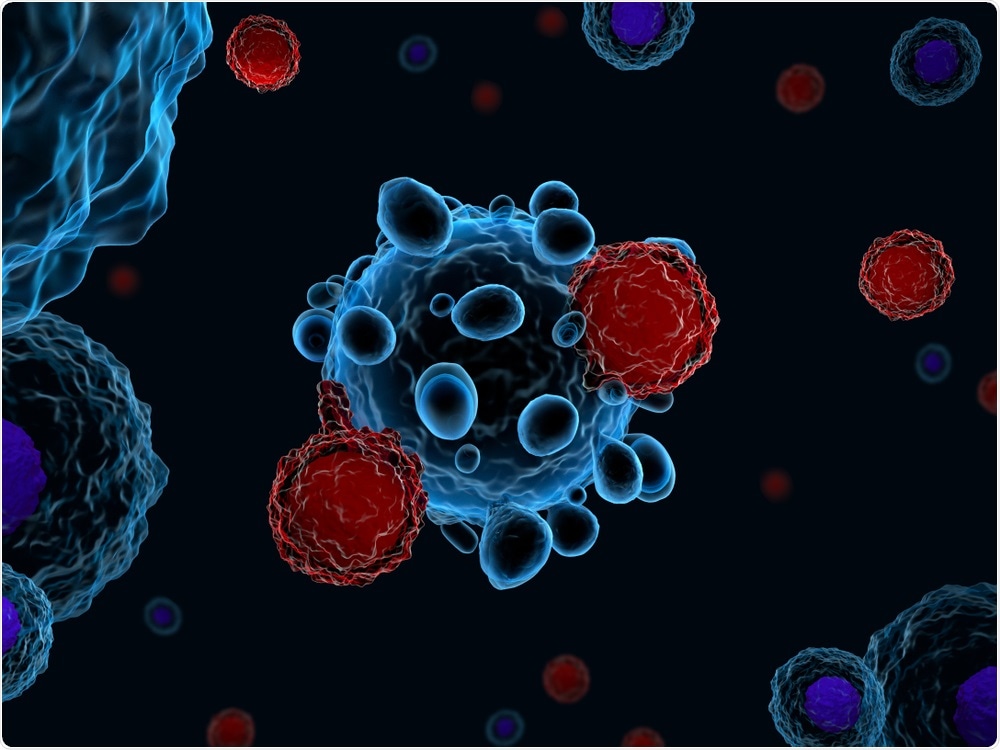To develop improved cancer immunotherapies, it is essential to understand how cancers shut down the natural immune response to foreign antigens. This current study demonstrates how mice lacking the Siah2 gene, fail to develop BRAF-mutation carrying melanoma from the corresponding cells, completely rejecting them. This could help in boosting the anticancer effect of existing specific immune checkpoint inhibitors, such as anti-PD-1 drugs.

Image Credit:Meletios Verras/Shutterstock.com
Siah2
Immune checkpoint inhibitors (ICT) are drugs that take advantage of the body’s immune system to fight their cancers. They are among the most important advances in the treatment of cancer over the past few years, and in about 40% of melanoma patients, the treatment has enabled survival for years instead of months.
This is especially when combined with targeted therapies and other modes of treatment. Not only is the response more potent and long-term, it also occurs with several subtypes of cancer, helping many more patients. However, it is necessary to understand more about the regulation of the immune system and its function, in order to identify those molecules that respond best and those who may rapidly develop resistance to this mode of therapy. One such avenue under investigation is the ubiquitin-proteasome system, that regulates many important immune system controls.
The molecule known as Siah2 is part of this system, involved in the regulation of essential cell pathways including the response to low oxygen levels, the unfolded protein response (both maintain tumor growth), the integrity of the cell junctions, the mitochondrial working, and cell proliferation. It is also known to take part in the development of cancers. Many of these processes are also implicated in the functioning of immune cells. However, there was no proof that Siah2 regulated the anti-tumor immune response in cancer.
The study
The scientist who directed the study, Ze’ev Ronai, has been intensively studying Siah2 for almost 10 years and is involved in synthesizing a small molecule drug that inhibits its action.
The researchers used a mouse model where the Siah2 gene was deleted from all cells. BRAF-mutant melanomas were then transferred to the mice. This is a melanoma subtype that accounts for roughly 50% of all tumors.
This experiment allowed them to demonstrate the role played by this protein in the recruitment of T cells within a tumor, and how this controls the cell cycle of these immune cells. The greatest effect of Siah2 deficiency is seen on T regulatory or Treg cells. This shows that Siah2 is involved in producing antitumor immunity.
T cells often find difficulty surviving within a tumor, because of low oxygen and nutrient levels. However, Treg cells can function better to suppress T cell activity within this type of environment as they use oxidative phosphorylation in contrast to the glycolysis used by other immune cells. Thus, suppressing Treg cell activity alone should boost the immune response against cancer, a desirable outcome.
The study found that the presence of Siah2 allowed for the rapid growth of melanomas, whereas its absence caused the tumors to shrink and completely disappear. Secondly, the use of anti-PD-1 drugs in Siah2-/- mice was effective in eliminating the melanoma, whilst the tumors were resistant to these drugs in the controls.
Siah2 controlled the stability of p27 in T cells activated by the tumor, regulating the proliferation of T cells. This, in turn, increased the number of Tregs in the tumor, but not the effector T cells.
The absence of Siah2 activity caused increased inflammatory markers to be present on the tumors, including genes of the Th1 and NOS2 pathways. Many other inflammatory genes and chemokines were expressed to a greater degree. On the other hand, the absence of Siah2 loss caused higher levels of the chemokine Cxcl9, an effector T cell recruiter, while reducing the levels of Ccl17 and Ccl22, Treg recruiters. This caused fewer Tregs to infiltrate the tumor compared to normal, in the Siah2-/- mice, but the reduced number of Treg cells in the tumor was accompanied by an increased number of T effector cells. This led to an enhanced immune response against the tumor, reducing tumor growth.
Implications
Our data points to changes in Treg proliferation, suppressive function, and recruitment which collectively impact their abundance in tumors, enabling enhanced anti-tumor immunity.”
Researchers
Thus, the development of an environment that suppresses Treg cell activity by a Siah2 inhibitor could allow the use of a PD-1 inhibitor for the effective treatment of currently resistant tumors. It could also allow the use of other similar immune checkpoint therapies that do not have any impact on Treg cells.
The researchers conclude, “Our data further support the notion that combining ICT with cell cycle-disrupting drugs provides an effective strategy to promote an anti-tumor response. Targeting the ubiquitin ligase Siah2, central in cell-autonomous proliferation and activity of Tregs, may thus offer the rationale for an innovative therapeutic approach.” In the words of Ronai, “Our discovery only fuels our sense of urgency to find a drug that inhibits Siah2.”
Source:
Scortegagna, M., Hockemeyer, K., Dolgalev, I. et al. Siah2 control of T-regulatory cells limits anti-tumor immunity. Nature Communications 11, 99 (2020) DOI:10.1038/s41467-019-13826-7. https://www.nature.com/articles/s41467-019-13826-7#article-info